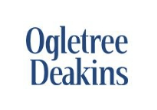On June 27, 2014, U.S. Citizenship and Immigration Services (USCIS) released its 2014 Ombudsman Annual Report. The Ombudsman Annual Report confirms what employers and immigration attorneys have been experiencing for the past two years, that USCIS is exercising a forensic level of scrutiny towards the L-1 intracompany transferee visa category. The data in the report reveals that the Request for Evidence (RFE) rate for the L-1B visa category is nearly 50 percent and for the L-1A visa category is nearly 43 percent for the first half of FY 2014, respectively. This reflects a significant rise in the RFE rates in recent years. However, despite the high RFE rates in 2013, the data analyzed by the Ombudsman’s office shows that USCIS approved more than 83 percent of L-1A visa petitions and 67 percent of L-1B petitions. In the report, the Ombudsman concludes that these high RFE rates coupled with the high approval rates indicate that USCIS needs to better articulate evidentiary requirements, particularly with respect to the L-1B visa category.
For years, employers and immigration attorney have asked for further clarification regarding the definition of “specialized knowledge,” which is the key component of the L-1B visa category. While clarifying guidance was issued in 2013, the continued high RFE rates show that the legal standard for “specialized knowledge” is not well understood by adjudicators. This may account for the increased number of RFEs requesting documentation previously provided by employers and RFEs that demand additional evidence above and the applicable legal standard of the preponderance of the evidence (“more likely than not”). However, what is clear is the denial rates in the L-1B visa category have increased substantially. In 2009, the denial rates overall for the L-1B visa category was about 20 percent. Today, the denial rates are at about 40 and 32 percent for FY 2013 for the California Service Center (CSC) and Vermont Service Center (VSC), respectively. The denial rates for the first half of FY 2014 appear to be higher. This data indicates that more clarifying guidance is needed for the L-1B visa category and adjudicators may need additional training on the application of the L-1B legal standards and definitions. When the USCIS will issue this additional guidance remains to be seen. For now, employers should anticipate having to submit substantial documentation for all L-1B petitions filed with USCIS along with delays in the overall adjudication process.



